Letters from India III. - Varanasi
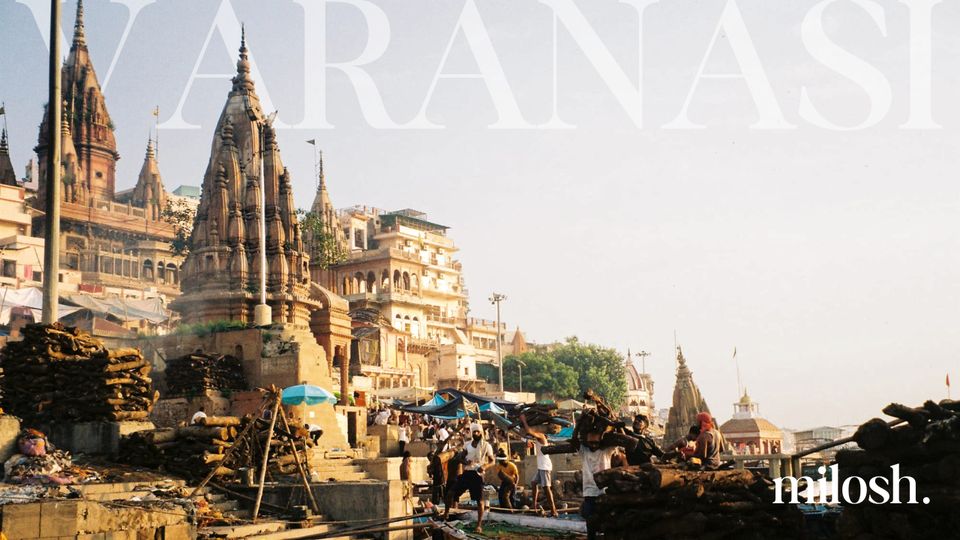
Apart from writing travel stories once a week, I consult tourism boards and businesses. One thing I advocate for most of the time is authenticity. If a place aims to attract visitors, building authentic experiences is an absolute necessity. This week's newsletter, the final one in my mini-series about traveling through India, is about one of the most intense and authentic experiences I've ever had.
We continued our way through India on trains. Hitching another late-night train, Lukas and I settled in for a good night's sleep. The train ride took roughly 12 hours. We had planned to stay in Varanasi for three days, as we found a direct flight from there to our next destination. We decided to give ourselves enough time to fully process what this city has to offer. We teamed up with two freshly graduated aspiring yoga teachers from Rishikesh, Jamie and Silvana. In a group of four, we set off to explore this one-of-a-kind place.
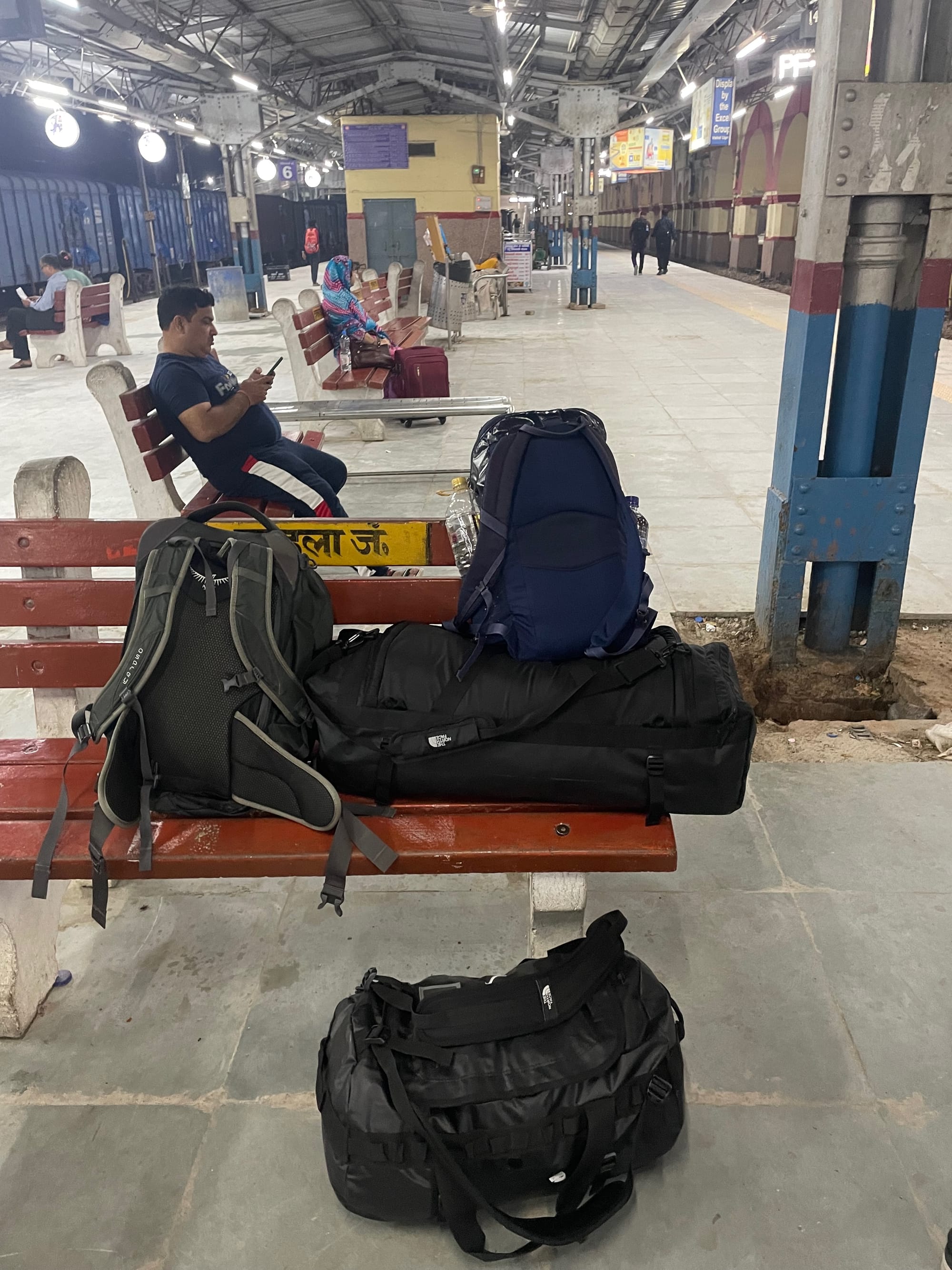
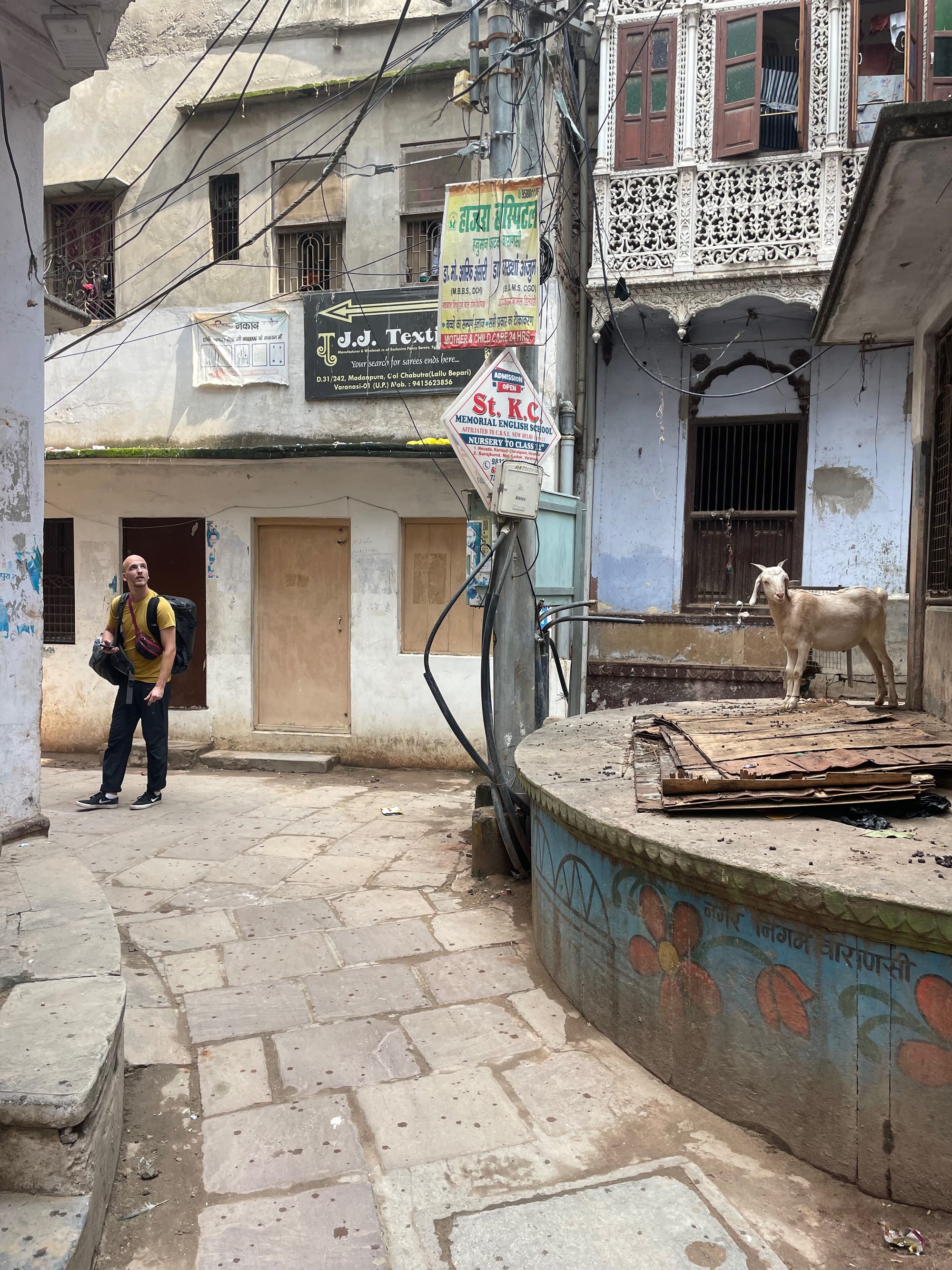
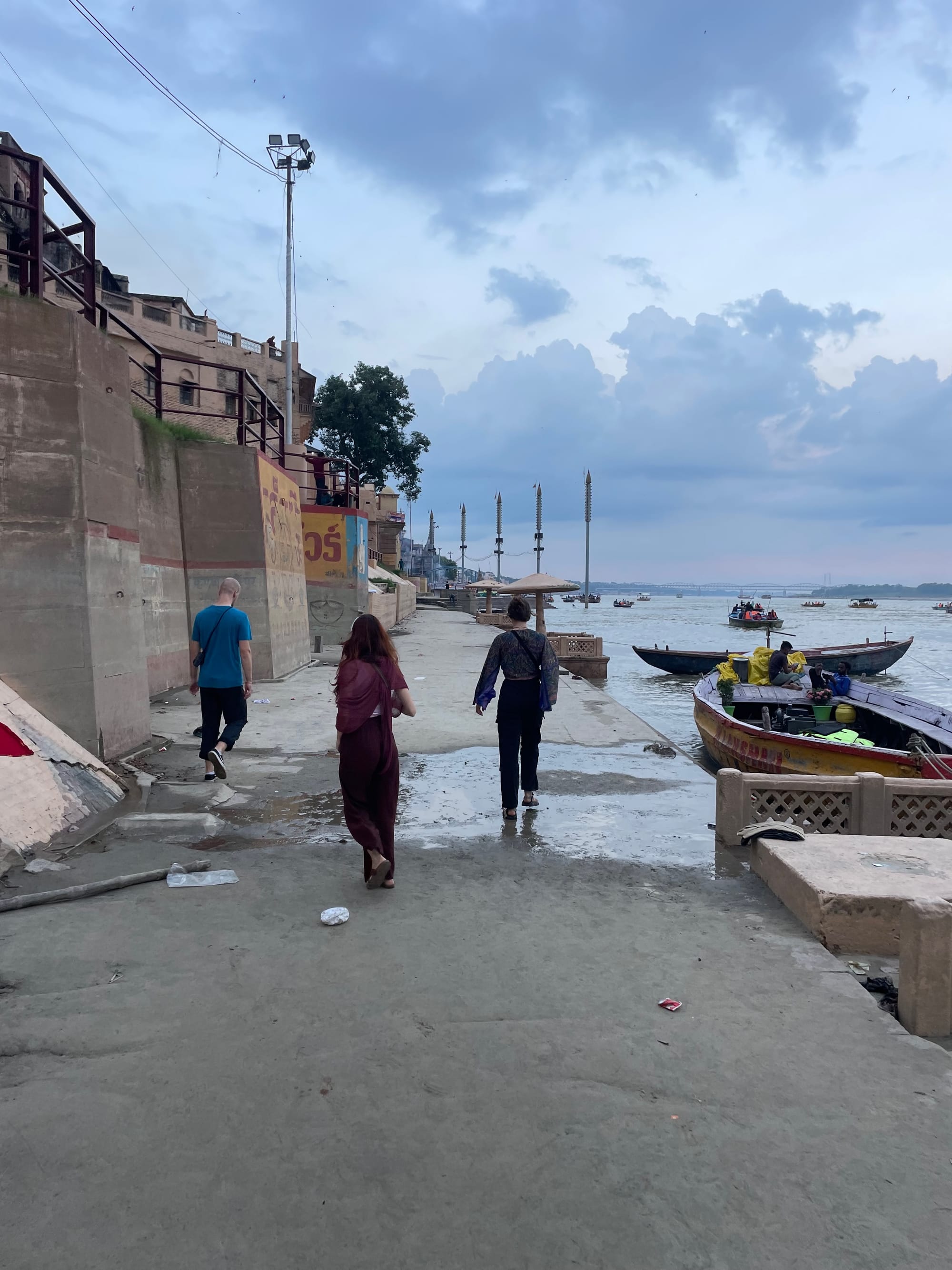
Getting to Varanasi.
What Makes Varanasi Unique?
Varanasi stands out as one of the most unique and spiritually significant places in the world, attracting millions of visitors each year. Known as the holiest city in Hinduism, it sits on the banks of the sacred Ganges River. Here, more than anywhere else, daily life intertwines with deep religious rituals. With over 3,000 years of recorded history, Varanasi is one of the oldest continuously inhabited cities in the world. It offers a glimpse into ancient traditions and spiritual practices that have endured the test of time.
The city is revered as the ultimate pilgrimage destination, with an estimated 1 million pilgrims visiting annually for religious rites, cremation ceremonies, and to bathe in the Ganges, believed to wash away sins. The famous ghats, like Dashashwamedh Ghat and Manikarnika Ghat, are spiritual and cultural epicentres where daily rituals of life and death play out in harmony.
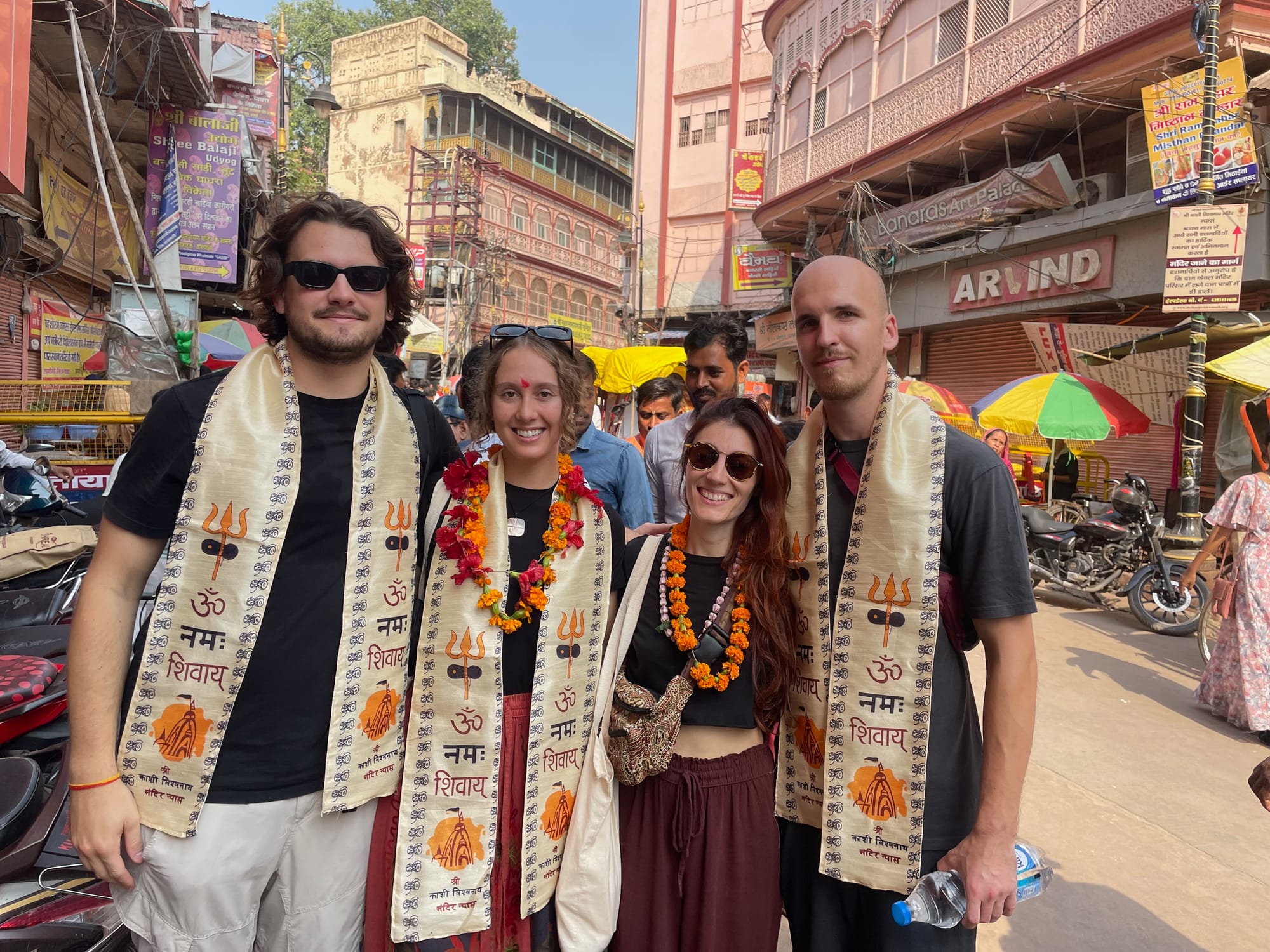
For travelers, witnessing the evening Ganga Aarti or wandering through Varanasi offers a raw, authentic experience that few other places in the world can match. It happens often that you may be enjoying your lassi, trying to find your way, and suddenly you will see mummies being carried through the streets, getting ready for their ceremony.
From the first moment of walking the streets of Varanasi, one can feel the special atmosphere. The air is dusty and dirty. Streets are narrow. The emotions on people's faces are priceless. You simply know this place is different. On the first day, we managed to stroll through the town, making our way down to the Ganges River to see the ceremony. As we had been sort of unguided, we tried to chat with the local people to understand what makes the soul want to come and die in Varanasi. We heard plenty of stories. People save up their money throughout their entire lives so they can afford the special, unique type of wood sold in Varanasi. Or others who knew their time was coming to an end and decided to go on a pilgrimage toward Varanasi, planning to spend their final days here.
To a Western mind, all this feels unreal and hard to process, but the longer we spend in the city, the more "peaceful" it starts to feel. On the first day, I felt so overwhelmed that I decided to spend the evening on the rooftop of my accommodation rather than going back to the city.
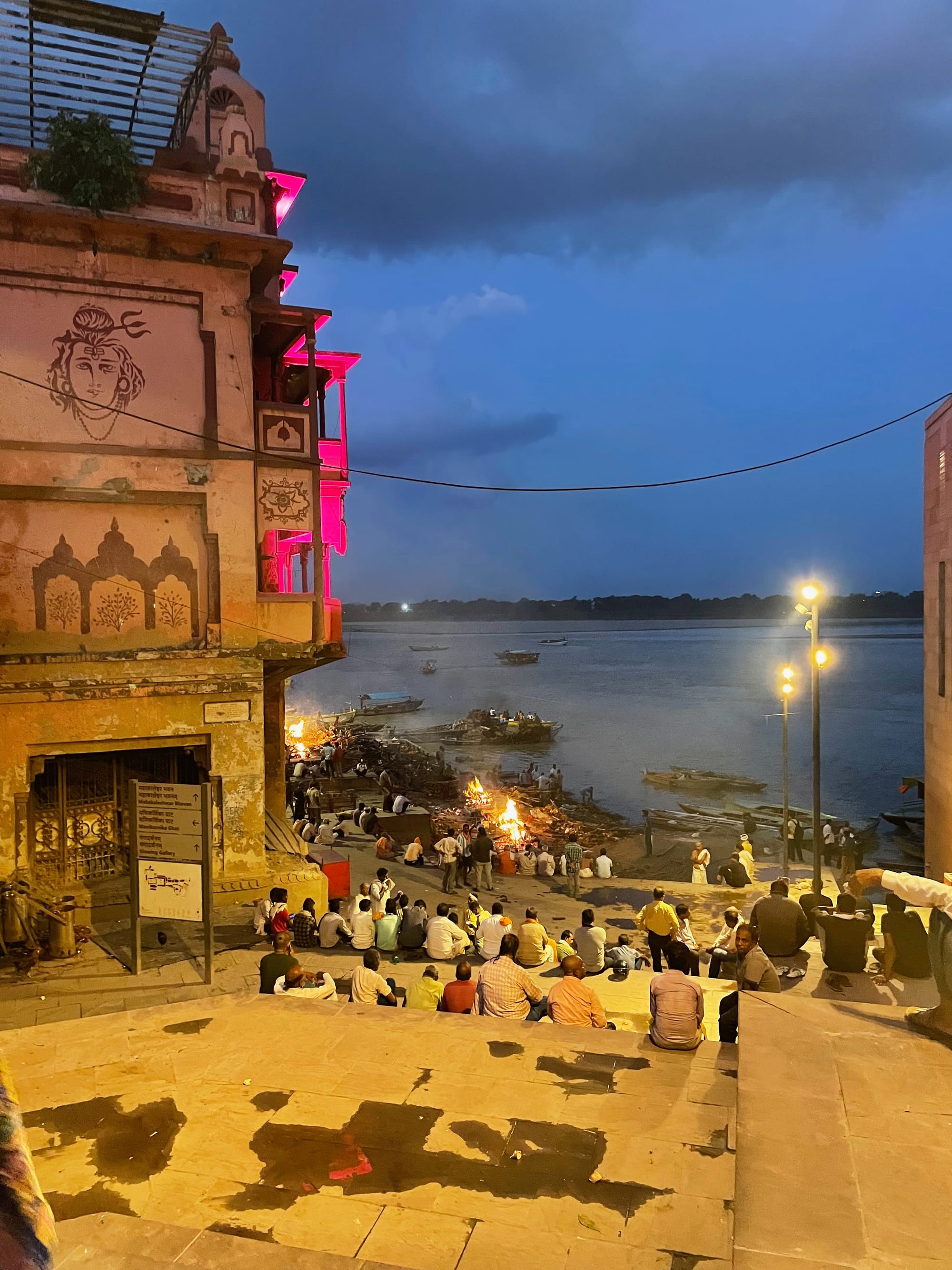
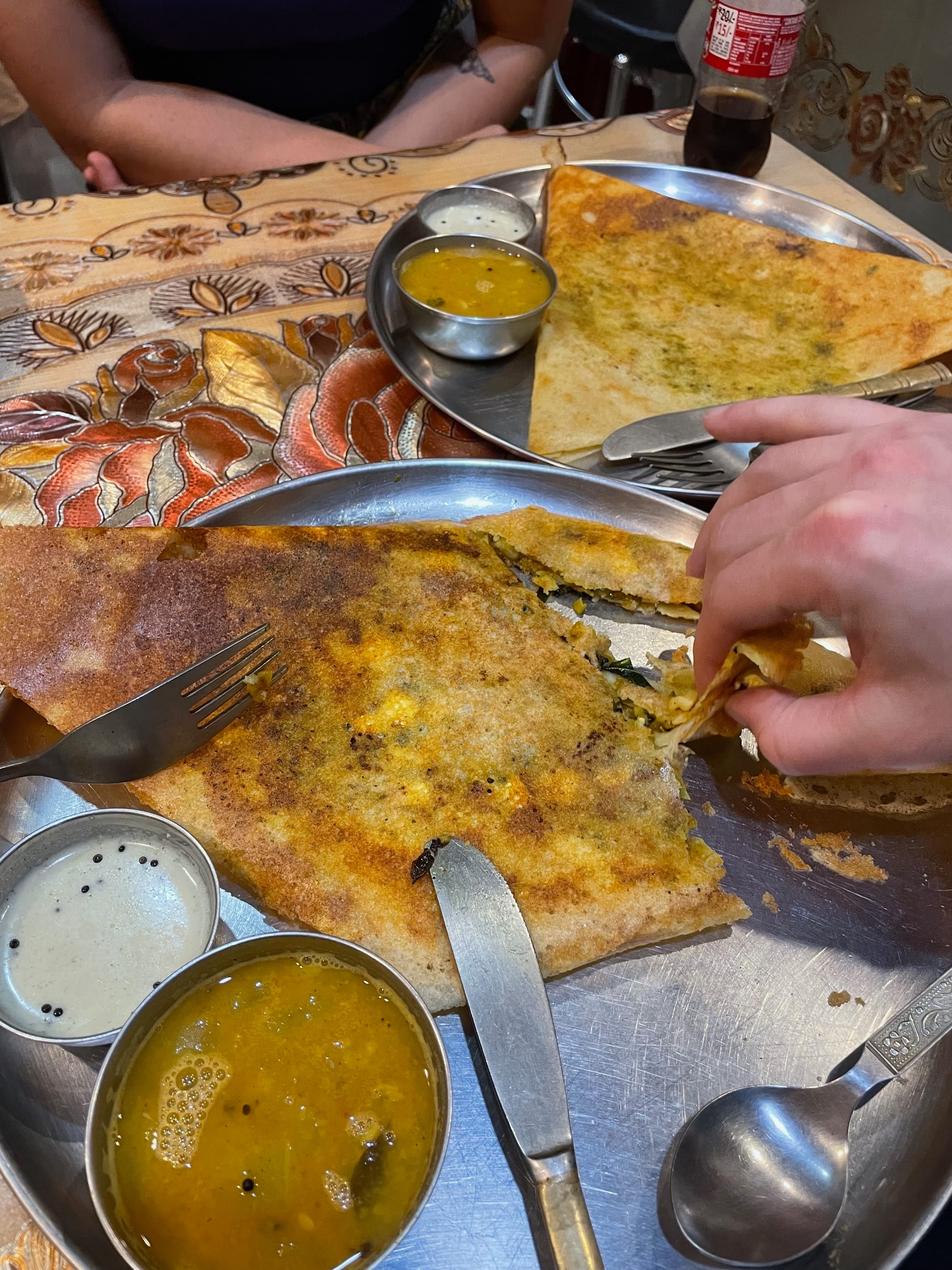
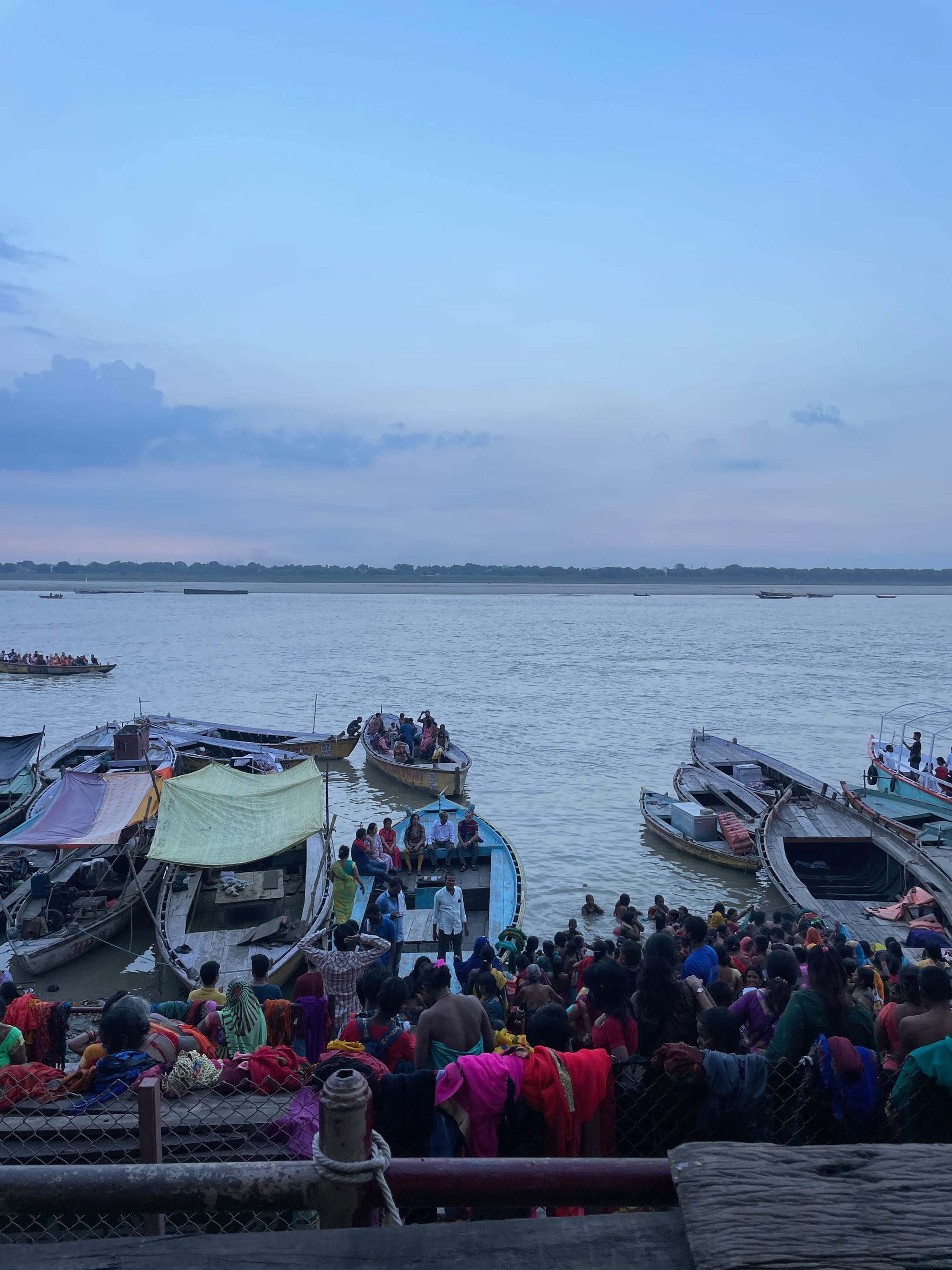
As we grew more and more curious, we planned a visit to a sunrise Ganga Aarti, as well as a visit to the local temple. Seeing thousands of people lining up on the shore of the river before the sun had risen gave me chills. Sadly, words can't transform the sound, because here the drums and the sounds of people praying were something that gives me chills to this day. As we boarded our boat to get to the ghats from the river, we saw the first people taking baths—again, something the Western mind can hardly process. The river became busy shortly after, with plenty of boats carrying plenty of tourists. The question we started asking one another was: Should we be here? Should this sacred ritual be shared? Should foreigners be present?
Tourism Affect on Varanasi
Nowadays, more than ever before, the growth of "protests" against tourism and tourists is spanning worldwide, mostly in countries heavily dependent on tourism—like Spain, Portugal, or Colombia. While the resentment of the local people is often understandable, the way of passing the message is mostly not right. If tourism costs locals and creates gentrification, it's not the tourists' or locals' fault. It's the government and organizations who were unable to find a formula that benefits most. Oftentimes, chasing increased visits and more revenue coming in without having any plan in place. Tourism brings possibilities and job opportunities to many places in our world. It has its benefits and disadvantages, but it’s still, to many countries, the main source of job opportunities.

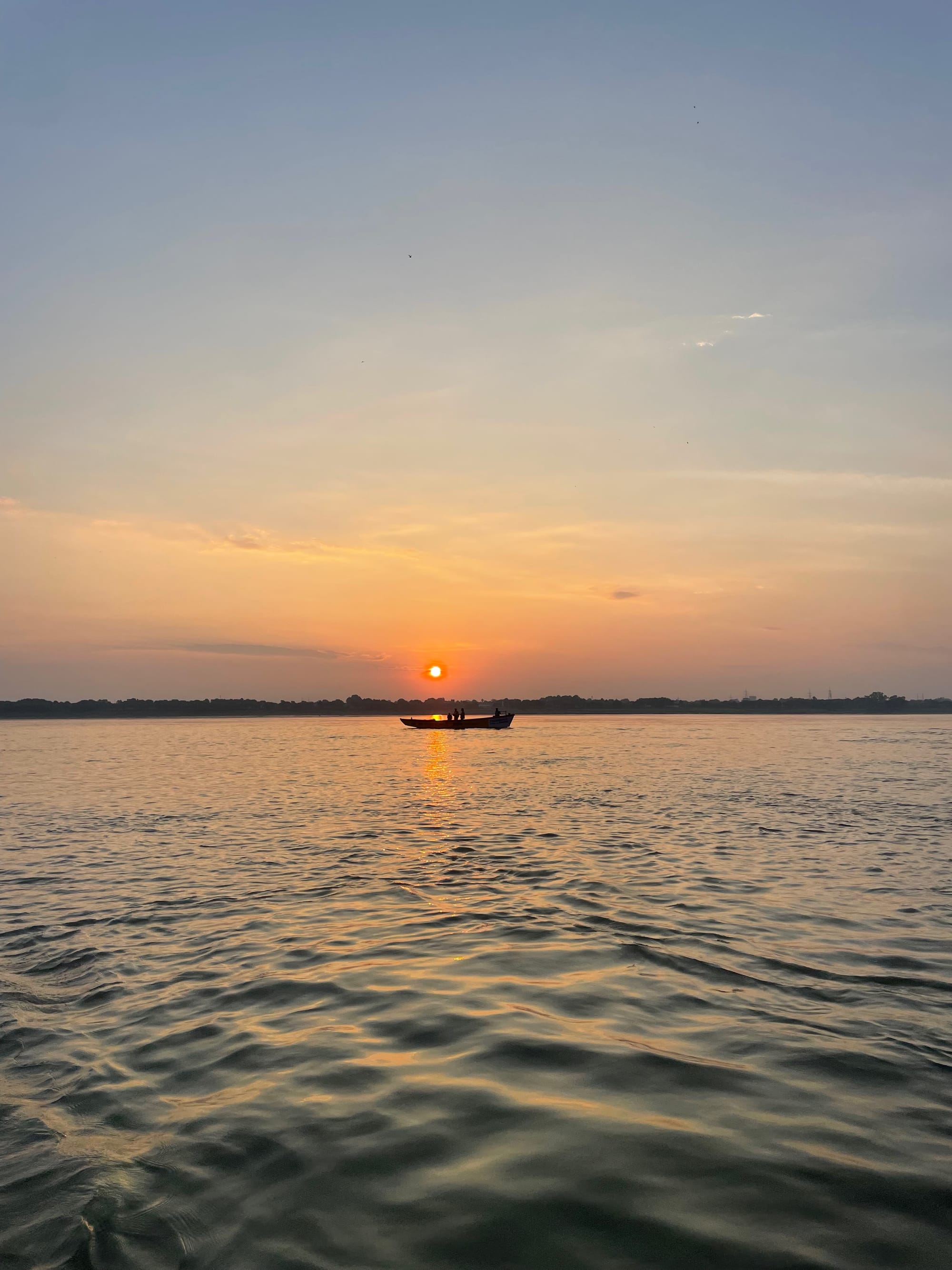
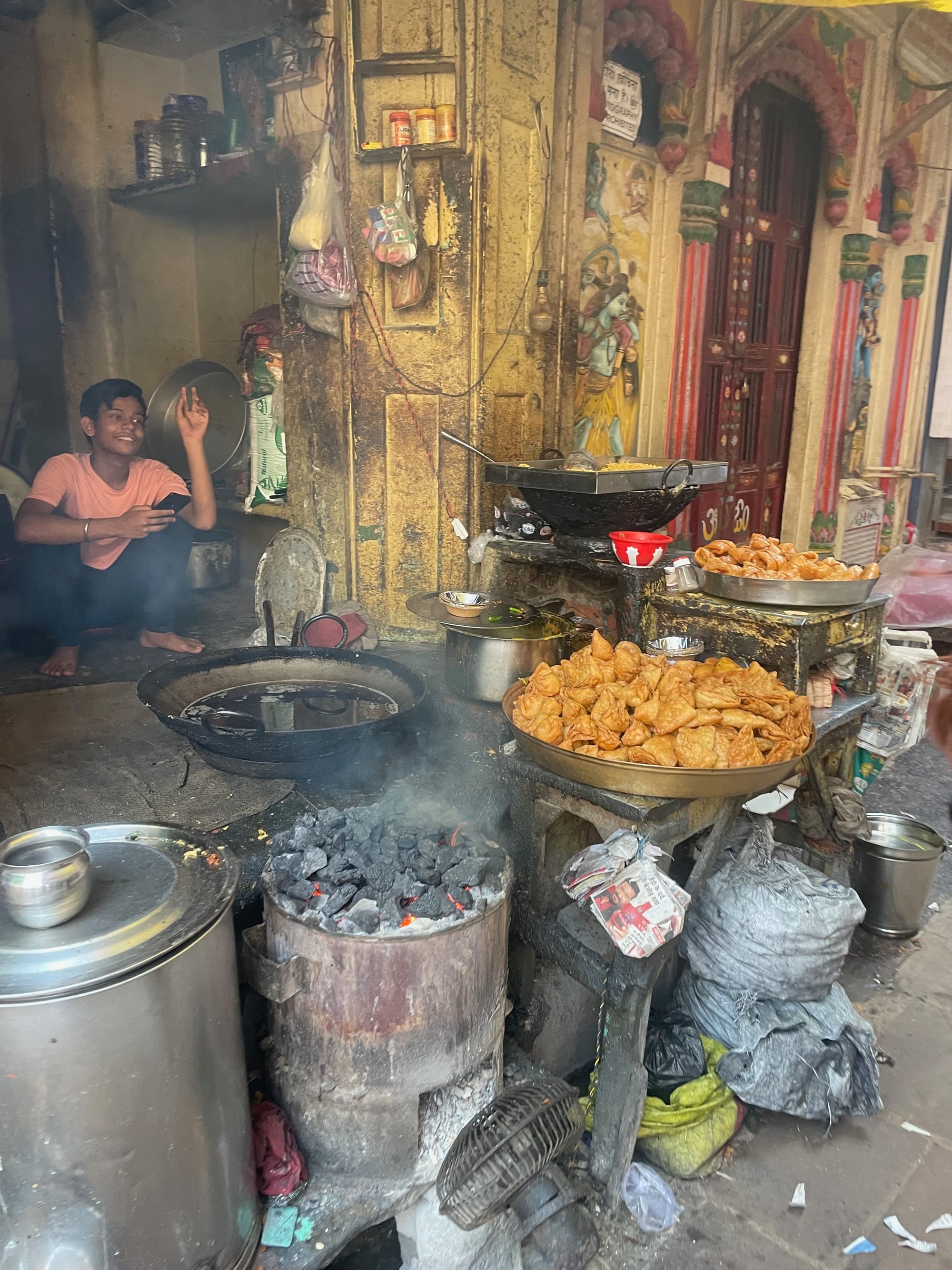
Sunrise at the river Ganges.
Tourism in Varanasi, much like the rest of India, experienced a sharp decline during the COVID-19 pandemic. The ghats and markets, once filled with pilgrims and tourists, went silent. For a city where over 50% of the population directly or indirectly depends on tourism, the impact was devastating. Street vendors, local guides, small guesthouses, and artisans struggled to make ends meet. However, as travel restrictions lifted, Varanasi saw growth in domestic and international tourism. With the push toward promoting domestic travel, more Indians explored their own cultural heritage, including holy cities like Varanasi. This renewed interest in domestic tourism brought new opportunities, with initiatives focusing on responsible tourism to protect the city’s cultural legacy.
We got to know a photographer who has been coming to Varanasi yearly since 2016. He had been forced to skip numerous visits during COVID-19, but he decided to support his local guides in those years and pay them money for guiding, despite not coming. He told us stories of how rough the times were for locals then.
I believe every place has a story to tell and an audience that's willing to hear it. I believe unique places will always be visited. Hence, more than ever, it's important to make sure the growing travel industry understands how to attract people to more and less popular spots and ensure the visitors are educated on what the local place offers culturally.
Being a traveler does not only mean being open-minded, but it also means not being ignorant.
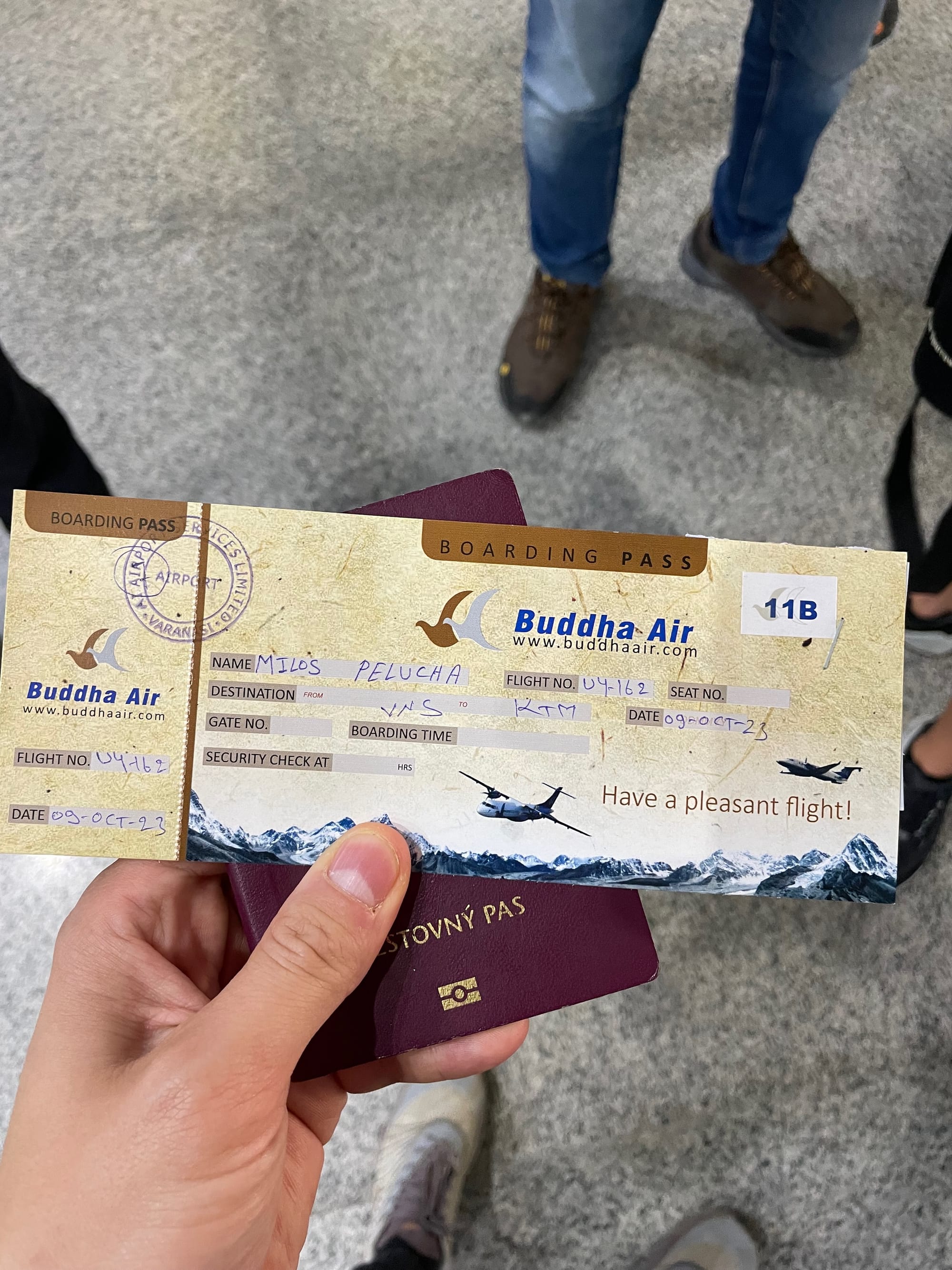
Off we go to...
